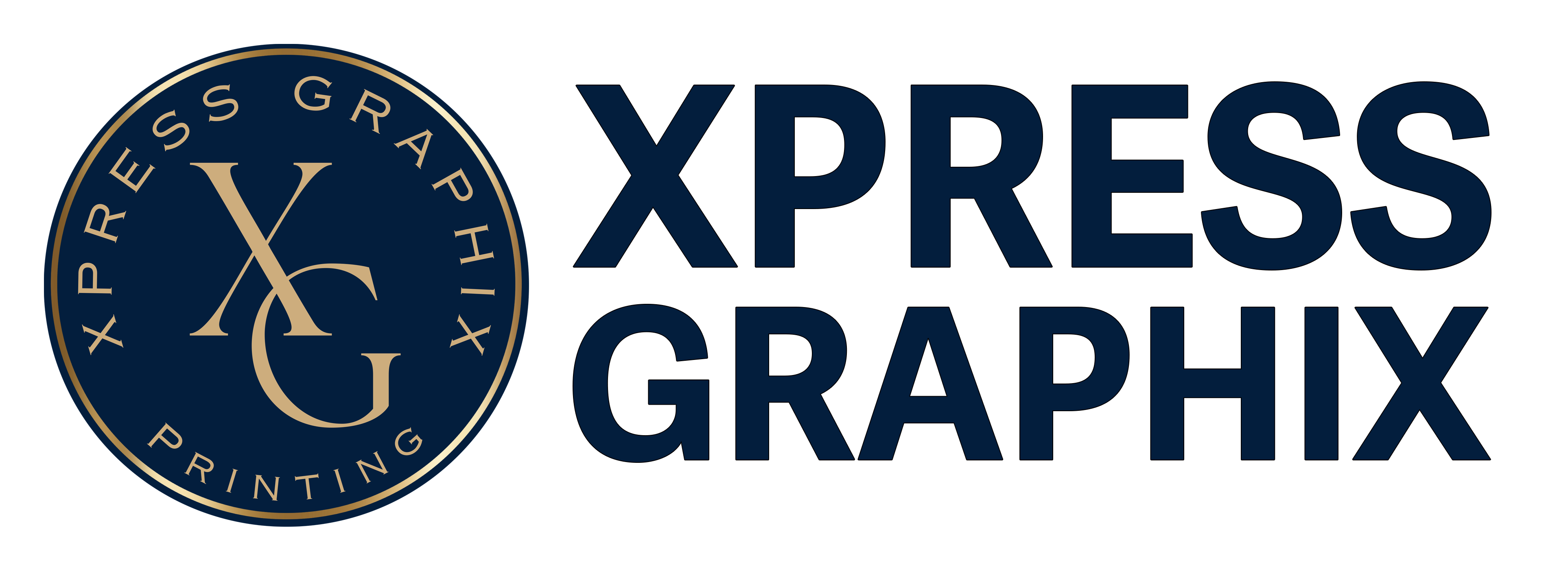Frequently Asked Questions
Wondering how to turn your ground-breaking vision into a high-impact visual? Need a short run print project for your corporate event next week? Whatever the job, Xpress Graphix printing services have you covered.
Check out the answers to some of our most frequently received questions below. Don’t see what you’re looking for? Contact us and we will be happy to assist you.

Order Questions
How do I get an estimate?
You can fill out an online estimate request form, or call and talk about your project needs.
How long will it take for my order to be completed?
If you’re working within a time constraint, let us know when you call for a quote. We can look at our print production schedule to ensure that you will meet your deadline.
File Details
What file format is preferred for digital documents?
We prefer PDFs (Portable Document Format) with a minimum 1/8” bleed and crop marks. Most office and design programs allow you to save or export your files into a PDF format. Occasionally, the original file may be needed if artwork edits are required.
What resolution do my photos and graphics need to be set to?
Resolution should be set to 300 dpi. Pictures and graphics pulled from the internet are often low resolution, typically 72 dpi or 96 dpi. Avoid these graphics, as they will appear pixelated and blocky when printed. Also, save all photos in CMYK mode, not RGB when possible. Images saved in RGB mode may not print properly. If you are unable to save your image in CYMK mode, please let us know.
How do I know if my fonts will look correct?
The best way to ensure your artwork fonts will print correctly is to send them as outlined objects in your original file. If your program doesn’t allow this, packaging or sending us the fonts will work as well. If you have a question about how to send your fonts properly, please call us and we’ll be glad to help.
General Questions
What types of products and services do you provide?
Xpress Graphix is a full service marketing communications provider, and offers a wide range of print, marketing, design, and sign services.
Printing FAQs
What is a proof and why is it important?
In printing terms, a proof is a one-off copy of your document after all modifications and printing setup processes have been completed. It is your last, and best, opportunity to make sure that your print job comes out the way you envisioned. By carefully inspecting the proof, you can help ensure an accurate, flawless delivery of your print job the first time.
Do you require minimum quantities of any of your products?
Nope! Some printing methods may be more cost-effective than others, but we are happy to work with you to determine which printing method is best for your project.
Do I need to know about color separations or half-tone printing to get my job completed?
Absolutely not! We handle all the “back-end” production for you.
The terms are pretty easy to understand, though. Color separation refers to our offset printing process, where we use cyan, magenta, yellow, and black in four separate plates that go directly to the press. These four colors can create almost any color you can imagine!
Half-tone printing refers to converting a solid tone of black ink or one color into tiny dots that are invisible to the eye to create your image. You see a solid image, but it’s really created from the spacing of these tiny dots.
Is white considered a printing color?
Not typically. Because white is the default color of paper, it is simply recognized as the absence of ink.
What paper types do you offer?
We have a large collection of “house” stocks in our production area. If you have a specific style in mind, we can check our in-house inventory to see if our selection is able to match your tastes. Or, we’ll check with our paper vendors to see what they have on hand. Keep in mind that special stocks or materials may require bulk purchasing from suppliers.
What is the Pantone Matching System?
The Pantone Matching System (PMS) is a color reproduction standard in which colors all across the spectrum are each identified by a unique, independent number. The use of PMS allows us to precisely match colors and maintain color consistency throughout the printing process.
Why do the printed colors look different than the colors on my screen?
In short, printers and monitors produce color in different ways. Monitors use the RGB (red, green, blue) color model, which usually supports a wider spectrum of colors. Printers use the CMYK (cyan, magenta, yellow, black) color model, which can reproduce most—but not all—of the colors in the RGB color model.
Depending on the equipment used, CMYK generally matches 85–90% of the colors in the RGB model. When a color is selected from the RGB model that is out of the range of the CMYK model, the application chooses the closest matching color. Programs like Adobe Photoshop will allow you to choose which color will be replaced; others may not. We’ll provide you with a sample print right before we print your job to ensure a “what-you-see-is-what-you-get” final product.
